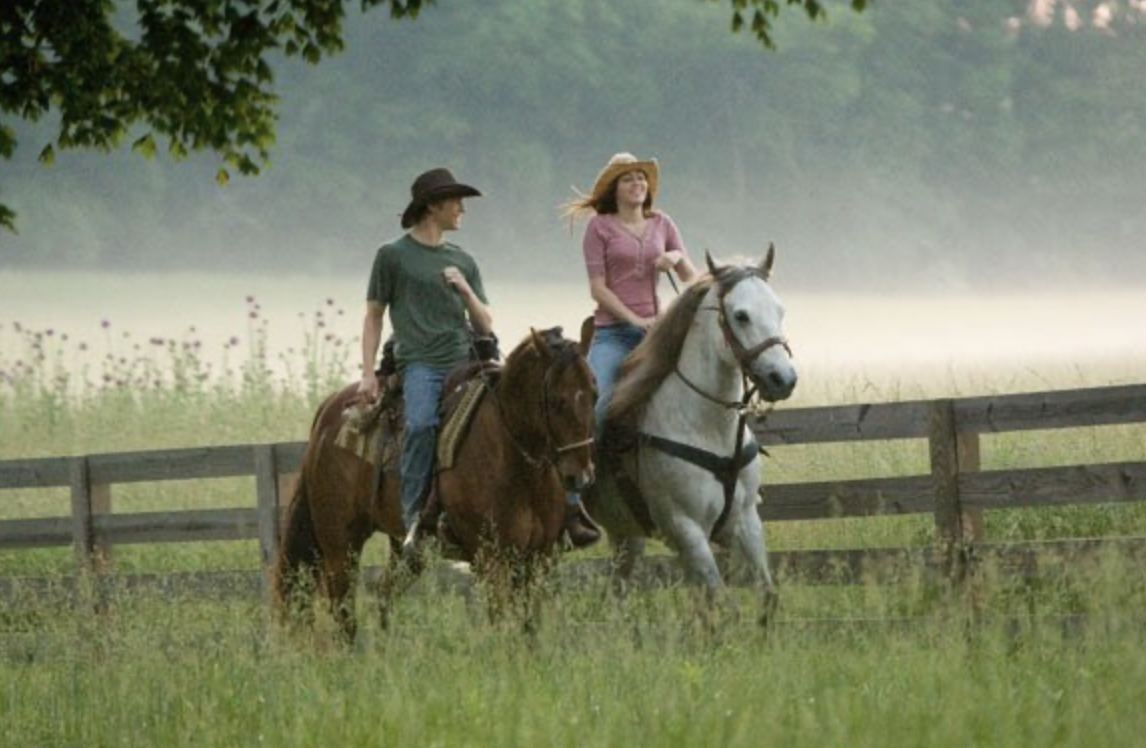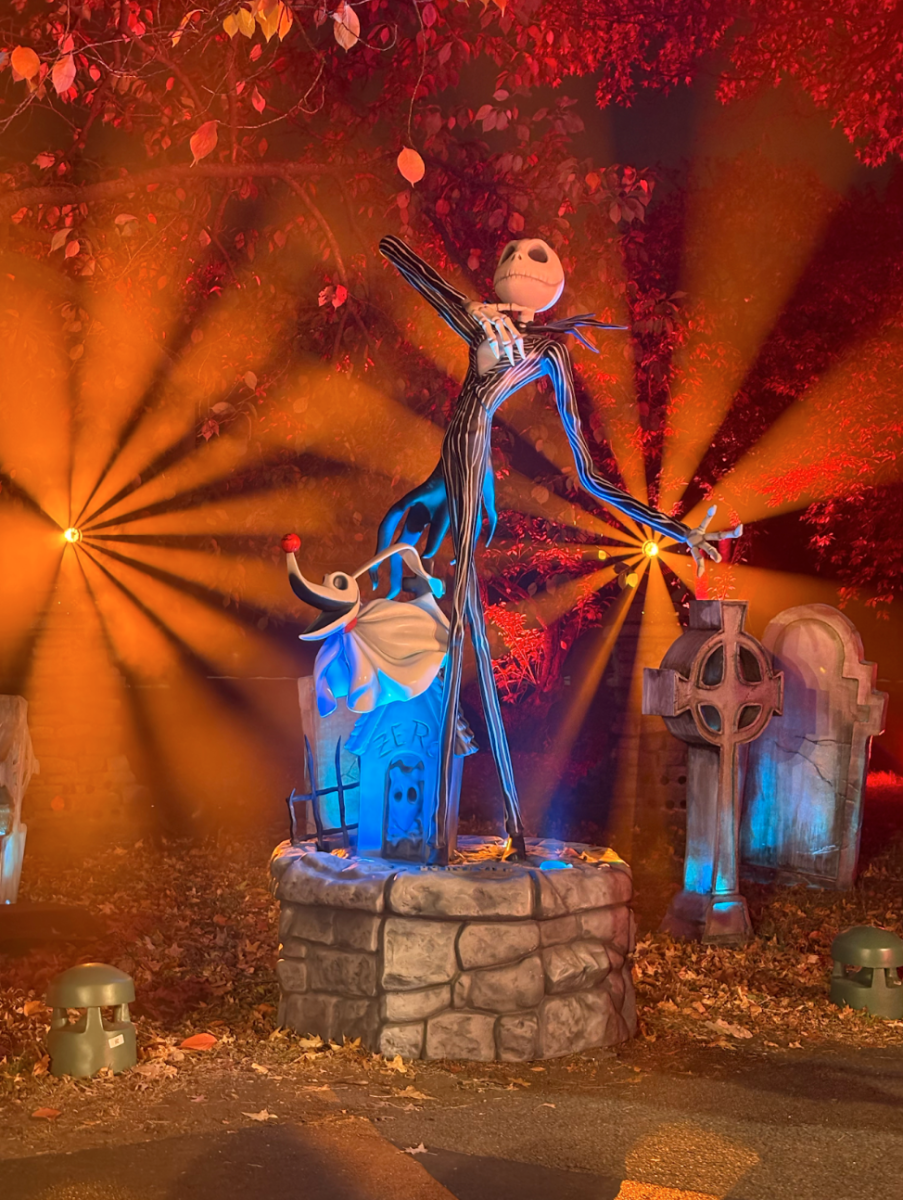One of the most complex movies created by Disney has no canonical set place in its franchise’s timeline. How a room of writers can create such a profoundly moving piece of cinema and fail to make it fit into the timeline of its accompanying television series is baffling to me. So, let’s talk about it.
“It” being “Hannah Montana: The Movie,” obviously. Hear me out.
Miley Cyrus assumed the role of Miley Stewart (and, by extension, global pop star Hannah Montana) in 2004, with the widely known “Hannah Montana” television series hitting screens on Disney Channel in 2006. The series’ accompanying film, “Hannah Montana: The Movie,” was released in 2009, and fans have decided it canonically fits best around season three of the show.
In “Hannah Montana: The Movie,” Cyrus’ character, Miley (whose alter ego is global pop sensation Hannah Montana), opens the film headlining a sold-out concert tour, directly reflecting the year prior when Cyrus performed her sold-out “Best of Both Worlds” tour, which was extended by 14 dates to accommodate demand. I digress.
Miley gets into a fight with Tyra Banks over a pair of ugly heels (naturally) and is late to her best friend’s birthday party where she sequentially upstages her as she arrives dressed as Hannah.
Robby Ray, Miley’s father in the show and played by Cyrus’ father, Billy Ray Cyrus, is absolutely disappointed in his daughter’s neglect of her personal responsibilities, as he feels the persona of Hannah Montana is taking over her life. Understandably so, as he highlights that Miley forgot her own grandma’s birthday and instead wants to go to perform at an awards show in New York City in place of Beyoncé.
Anyways, Robby Ray tricks Miley into flying home to their small town in Tennessee for her grandma’s birthday, which she is absolutely distraught about.
Miley: “You can’t take Hannah away from me… I want to go home.”
Robby Ray: “You are home. Look around you.”
Miley: “Hannah means everything to me.”
Robby Ray: “That right there might be the problem.”
This is where the real message of the movie comes in. Robby Ray highlights that they created the persona of Hannah Montana to allow Miley to have a normal life while pursuing her dream of singing and that she needs to find herself again before continuing to chase fame. The real question of why Miley doesn’t wish to return home to Tennessee is questionable though. Yes, she wishes to pursue this life of fame and success through Hannah, but it is also briefly mentioned at the beginning of the film (and throughout the series) that Miley hasn’t returned back home to Tennessee since her mother passed away.
This extra level of traumatic emotional complexity to her internal battle between personas is deepend with the loss of her mother and can be really poignant with audiences — if addressed properly. Although the movie does little to address this issue aside from a sentimental moment between Miley and her grandmother (granted, this is Disney Channel after all), the loss of a parent at a young age is an important topic that needs to be represented in cinema, especially for the representation of children that have dealt with loss, rather than glossed over with pop songs and sequined dresses. (I won’t go into how crazy it is that practically every Disney princess has a deceased mother, though.)
While re-assimilating to life back at home and learning about her hometown’s financial struggles, Miley rekindles a romance with her childhood friend Travis while simultaneously offering up Hannah’s fame and talents for a fundraiser for the town. So, while Miley went home to find herself outside of Hannah, she had to become Hannah again in order to save Miley.
So now that the state of Miley’s entire hometown rests on her ability to perform a concert as Hannah and raise enough money to keep the downtown alive (because what else would be reasonable for a 16-year-old girl), she’s unable to hold onto a relationship with Travis because she has to go and be Hannah. This leads to a huge emotional moment in a revolving door where Travis finds out that Hannah is actually Miley, and he’s upset with her for not being honest with him. (This scene actually breaks my heart every time I watch it. It’s not even funny.)
First off, there was no reason for Miley to not just reschedule her date with Travis to a different day, or even a different time, then Hannah’s arrival dinner with the mayor. Secondly, who does Travis think he is that he is deserving enough to know Miley’s biggest secret when they haven’t talked in maybe six years? Anyway, that’s beside the point.
The stagnant part of this movie is where, while performing the fundraising concert as Hannah, Miley decides to take off her blonde wig which obviously reveals to the entire audience that she is, in fact, Hannah Montana. (Because, of course, the voice, face and everything else being the same wasn’t enough clue.)
This not only adds to the drama of the movie but also shows that Miley is Hannah and Hannah is Miley. It is virtually impossible to separate the two of them from one another, highlighting how impactful being in the public eye of fame is and how, more often than not, it is difficult for celebrities to have their own personal life unattached from their famous persona.
Not only does Cyrus’ character go through such an emotionally complex situation during the film of trying to find out who she is in the public eye, but this directly correlates to Cyrus’ lived experience at this moment in her career. Cyrus and her entire family were uprooted and moved to Los Angeles to accommodate Miley’s schedule in filming the TV series in 2006, which is exactly how audiences are introduced to Miley’s character in the series: a teenage girl who moves to Malibu to become a pop star.
Following her rise in fame from both the television series and her two released albums at this point in her career, “Hannah Montana: The Movie” not only encapsulated the complex life of the character of Miley Stewart but also of Miley Cyrus. Disney choosing to make Cyrus’ character have the same first name also shows how little of a distinction there was between the fictional character and the real-life actress trying to navigate life in the industry.







































































































































































































Chloe • Feb 11, 2025 at 3:07 pm
I agree completely with your assessment of the Hannah Montana movie and the overall Hannah Montana timeline. We all agree that the Hannah Montana movie deserved to be considered not only part of the timeline but a crucial moment in the trajectory of the show that marked the end of young Miley and launched the beginning of her professional career. Having to reconcile with what it means to be Hannah Montana while maintaining her small-town roots was the turning point in Hannah Montana becoming a career, rather than the double life Miley had been living. The writers choosing to ignore the movie and the integral storylines for not only Miley but Billy Ray Cyrus as well (not to mention Lucas Till’s young love interest role) was a mistake and is a slightly unfathomable choice in light of the pursuit of an engaging, nuanced show.